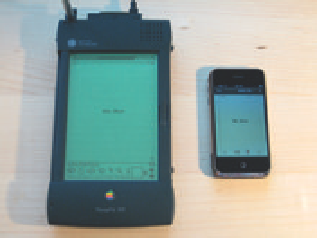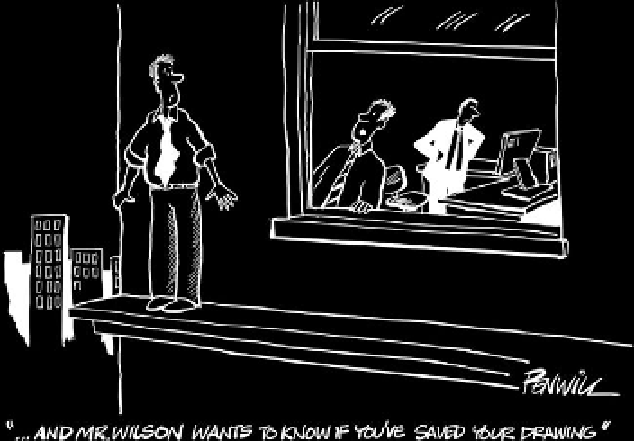Information Technology Reference
In-Depth Information
voice input, handwriting with a stylus, and gesture recognition. However, it
was not until Steve Jobs unveiled the iPhone in 2007 that there has been mass
adoption of such devices by consumers (
Fig. 8.18
). Instead of a mouse or a sty-
lus, the iPhone used touch as its input mechanism and transformed the user
experience.
Jobs and Apple also created an “App Store” where third-party vendors could
market their applications for the iPhone. By 2012, more than half a million
applications were available for download - copied electronically to the user's
own iPhone. In terms of usage, in the first two months of 2012, more than half
of user sessions on iPhones were spent playing games! From being a frivolous
application wasting valuable computer time, Moore's law has transformed the
economics so that computer games are now seen as immensely valuable. It is
this theme that we take up in
Chapter 9
.
Fig. 8.18. The first “Newton” message
pad from Apple was released in 1993.
This handheld device used an ARM RISC
processor and ran various applications
for handwriting recognition, note
taking, sketching, Internet access, and
other productivity tools. The more
sophisticated iPhone incorporates many
features of its predecessor.
Key concepts
Bus
M
16-bit microprocessor
M
Graphical user interface
M
Desktop metaphor
M
WIMP Interface: windows, icons, menus, and pointers
M
Mouse
M
Bitmap
M
Touch screen input
M


Search WWH ::

Custom Search